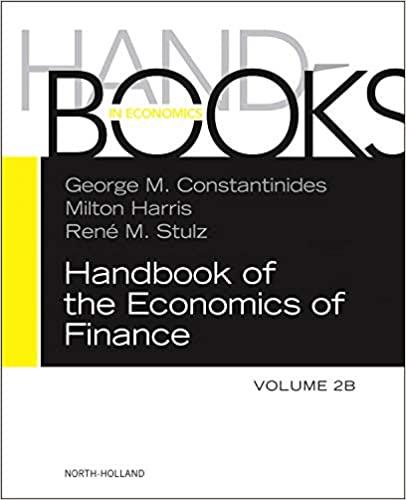

01 Question (2 points) See page 557 Player 1 and player 2 are playing a simultaneous-move one-shot game, where player 1 can perform action 1 or action 2 and player 2 can perform action A or action B. The payoff that each player gets depends on what both players choose. If player 1 moves action 1 while player 2 moves action A, player 1 receives a payoff of 8, and player 2 receives a payoff of 8. If player 1 chooses action 1 and player 2 chooses action B, player 1 receives a payoff of 9, while player 2 receives a payoff of 7. If player 1 instead chooses action 2 and player 2 chooses action A, then player 1 receives a payoff of 7, and player 2 receives a payoff of 9. Finally, if player 1 chooses action 2 and player 2 chooses action B, then player 1 receives a payoff of 10, and player 2 receives a payoff of 10. Use this information to answer the questions below. Note that it may help to summarize the above information in a payoff matrix before tackling the questions. 2nd attempt Part 1 (1 point) See Hint Use the line tool to plot the best response curves for each player. Note that you will need to piece together a few lines to make each best response curve. Then, using the point tool, mark the intersections of the best response curves. Let prepresent the probability that player 1 chooses to play action 1, and let (1-P) represent the probability that player 1 chooses to play action 2. Let q represent the probability that player 2 chooses to play action A, and let (1 q) be the probability that player 2 chooses to play action B. To refer to the graphing tutorial for this question type, please click here. Best Response Curves g 1.6 1.6 1.4 1.3 1.2 1 0.9 0.B 0.7 0.6 0.5 0.4 0.3 0.2 0.1 D 2 Part 2 (1 point) See Hint Based on the best response curves plotted above, what can you say about the Nash equilibrium (or Nash equilibria) in this game? Choose one: O A. A pure strategy Nash equilibrium does not exist in this game, nor is there a mixed strategy Nash equilibrium. O B. There are two pure strategy Nash equilibria in this game, with one mixed strategy Nash equilibrium. C. There is only one pure strategy Nash equilibrium in this game, with no mixed strategy Nash equilibrium. O D. There are two pure strategy Nash equilibria in this game, with no mixed strategy Nash equilibrium. O E. A pure strategy Nash equilibrium does not exist in this game, but there is one mixed strategy Nash equilibrium. O F. There is only one pure strategy Nash equilibrium in this game and one mixed strategy Nash equilibrium. 01 Question (2 points) See page 557 Player 1 and player 2 are playing a simultaneous-move one-shot game, where player 1 can perform action 1 or action 2 and player 2 can perform action A or action B. The payoff that each player gets depends on what both players choose. If player 1 moves action 1 while player 2 moves action A, player 1 receives a payoff of 8, and player 2 receives a payoff of 8. If player 1 chooses action 1 and player 2 chooses action B, player 1 receives a payoff of 9, while player 2 receives a payoff of 7. If player 1 instead chooses action 2 and player 2 chooses action A, then player 1 receives a payoff of 7, and player 2 receives a payoff of 9. Finally, if player 1 chooses action 2 and player 2 chooses action B, then player 1 receives a payoff of 10, and player 2 receives a payoff of 10. Use this information to answer the questions below. Note that it may help to summarize the above information in a payoff matrix before tackling the questions. 2nd attempt Part 1 (1 point) See Hint Use the line tool to plot the best response curves for each player. Note that you will need to piece together a few lines to make each best response curve. Then, using the point tool, mark the intersections of the best response curves. Let prepresent the probability that player 1 chooses to play action 1, and let (1-P) represent the probability that player 1 chooses to play action 2. Let q represent the probability that player 2 chooses to play action A, and let (1 q) be the probability that player 2 chooses to play action B. To refer to the graphing tutorial for this question type, please click here. Best Response Curves g 1.6 1.6 1.4 1.3 1.2 1 0.9 0.B 0.7 0.6 0.5 0.4 0.3 0.2 0.1 D 2 Part 2 (1 point) See Hint Based on the best response curves plotted above, what can you say about the Nash equilibrium (or Nash equilibria) in this game? Choose one: O A. A pure strategy Nash equilibrium does not exist in this game, nor is there a mixed strategy Nash equilibrium. O B. There are two pure strategy Nash equilibria in this game, with one mixed strategy Nash equilibrium. C. There is only one pure strategy Nash equilibrium in this game, with no mixed strategy Nash equilibrium. O D. There are two pure strategy Nash equilibria in this game, with no mixed strategy Nash equilibrium. O E. A pure strategy Nash equilibrium does not exist in this game, but there is one mixed strategy Nash equilibrium. O F. There is only one pure strategy Nash equilibrium in this game and one mixed strategy Nash equilibrium








